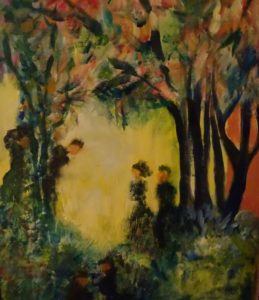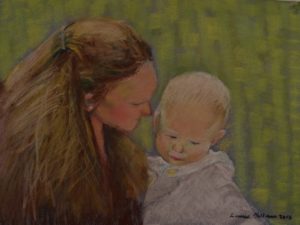Social Distancing Doesn’t Mean Emotional Distancing
As parents we are under the assumption that our kids minds are filled with technological experiments and games, especially because they are so often left to themselves, but actually they are still reading about what’s happening in the emotional worlds of the story’s characters if we encourage pleasurable time to themselves, not because of COVID but in spite of it.
Independent learning is a great thing. Our kids will be drawn to it if they see that we as adults are also passionately drawn to quiet activities such as reading. They will see how our emotions are stirred by what we read so they, too, want that pleasure.
I’ve discovered to my delight that grade school kids do pride themselves on not only their growing ability to read, but when free to choose on their own what they read they choose more sophisticated topics than we might even have considered encouraging. Their reading stirs their emotions and helps them understand the emotions of others. I’m not at all suggesting that we do encourage one path or another, but instead see what our kids are freely drawn to and express our interest in what draws them.
What Do Kids Read?

Close observation and listening to kids talk about books, yes, real print soft and hard cover books, not E books or Audio books is very exciting. They are fascinated between nine and twelve not only with superheroes but with mythological figures. Apollo is a superhero but a complicated one that expands a growing child’s mind and takes him or her into a kind of supernatural world where their emotions are stirred.
At this ten to twelve-year-old age kids are fascinated by not only what is concrete and they see as real in everyday life but by what could happen in the future and what has happened in imaginary futures. The emotions that are stirred in these fantasies of their futures are exciting and invigorating.
Younger kids may not pick up the nuances of the characters they read about or so we think. But they are far more discerning than we often imagine. They know when someone is clever or cunning, making a joke, or being serious. They identify with some characters rather than others because the former stir their emotions.
What Kids Learn by Observing Us

Even the littlest tots who aren’t even engaged in language yet as we know it, such as one-year-olds, are comprehending far more than we imagine. So, when we read picture books with them, while at times turning the pages is the fun itself, other times it’s actually the story line that stirs their budding emotional life.
If you observe closely, which you need to do because their attention can flit from one exciting thing to another, they are recognizing similarities and differences among not only animals seen in pictures, but expressions on characters’ faces. These days children’s books also reveal vehicles with facial expressions as well as the drivers in them.
Why do children enjoy this reading with us? Because they are clearly focused on the expressions frequently fluctuating on our faces. We can’t actually read these toddlers minds, but we can try by watching them closely. Listening carefully to what sounds like babbling, we find they are indeed communicating their feelings and wishes as well as their intentions.
How perceptibly their expressions change in response to our own. Yes, of course when they are hungry or tired they lapse into their ego-centric age-appropriate states of mind, but when they are well-rested and alert, they’re learning constantly all about their feelings and the feelings of others.
And I mean constantly. We must be careful not to deter them from what they are concentrating on even for brief moments because we think we know more about what might interest them than they do.
While we’re trying to drill toddlers on recognizing different colors, they’re noticing the tiny ant on the floor and they bend down to touch it. They are curious about this tiny being, even more tiny than themselves. Does it think? Does it feel? Does it think and feel like me?
So, it’s important to give up our focus, and certainly not be afraid that the ant will give them some peculiar germ, but instead get on the floor with them and watch the ant’s travels! They’ll learn their colors, I promise, but now they know something about natural life, how ants live and learn, too!
How Kids Socialize in Our Dystopian World

So we focus on how much or how little technology our kids should be exposed to, how much screen time they should or shouldn’t have before and now during this COVID experience. I admit I’ve even spent hours of time researching and writing about busy parents managing technology in our kids lives, but truly their lives are not all about technology!
Their lives are about LIFE! The loves and joys of life. The beauty all around us that gives us joy by taking long walks to colorful places stirring our feelings about what grows because we love to make plants grow where we live and where others live. Social distancing doesn’t mean you can’t plant vegetables and flowers at your home which churn up invigorating feelings about nourishing and giving to others.
In their somewhat current dystopian world of COVID even tots fix our masks in public having learned by watching that the mask should cover nose and mouth. So this is their world now. The early walkers who want no social distance because they want to toddle everywher3 are being taught this odd rule to back away from others. It’s truly unfortunate as if we are de-socializing our kids. But it doesn’t mean they can’t pick flowers to leave on a park bench for someone else to enjoy who happens by.We can think about others, even if we can’t visit them and let them know that we are thinking of them.
Thinking of others feelings, what cheers them up, we can all do even for strangers. And leave a note on that park bench that says, “Have a cheery day!” Or, leave the bundle of home grown tomatoes at your neighbor’s door with a note that explains you made them grow in your garden just for them.
Let’s teach our tots to think of other people’s feelings even those we can’t converse with and play with just now. It doesn’t have to mean they won’t learn other stuff just like pre-COVID days. If you live in a somewhat rural countryside, take them to see sheep and cows. They don’t have to visit a dense zoo filled with people to learn animals adjust to different lifestyles just like we do.
If you live in the city, point out the birds in the sky, set up bird feeders for hummingbirds they can stare at. Social distancing doesn’t prevent any of that.
Social Distancing doesn’t mean Emotional Distancing

Make sure you hug and kiss your kids as frequently as they enjoy, so they don’t confuse social distancing with loving you and you loving them! Cuddling, curling up together, sitting on laps must still be in their little lives. Maybe even more so than ever.
While they have to social distance from their peers, even at young ages if they’re outside, it doesn’t mean they can’t wave and yell, “HI!” to them or even to strangers. We can enjoy socializing even at a distance in real life, not only on Zoom.
No matter what we hope and think, it’s clear this COVID world is with us and will be for some time to come. But it doesn’t have to rule us, though it’s filled with rules we must follow.
Imaginative adults and imaginative kids can create new ways of living that engender caring tenderly for others in as many ways as we can think of—SO WE MUST!

(Paintings by the author who also encourages you and your kids to express your emotions by drawing and painting even six feet apart!)